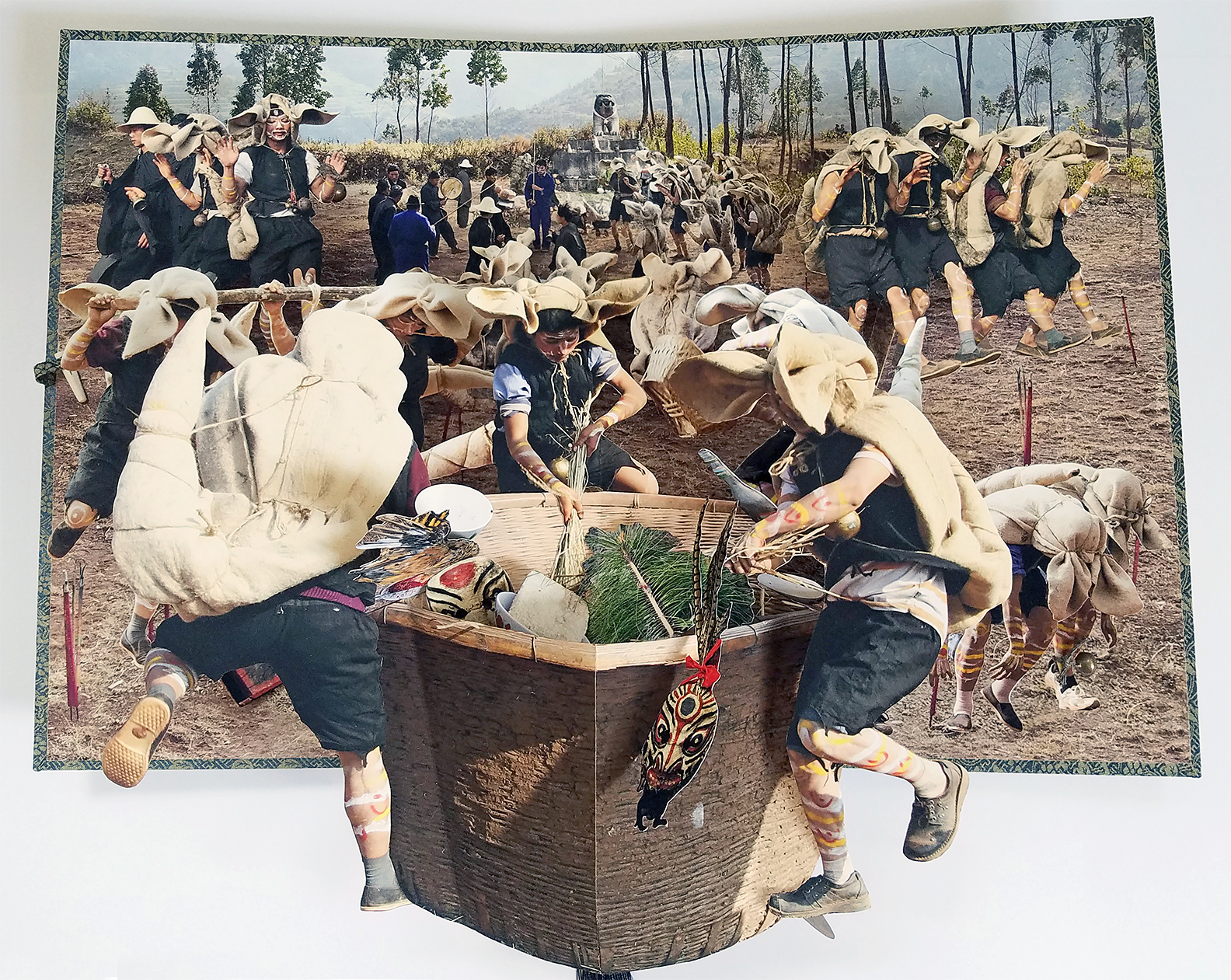
Combining his own creativity and digital techniques, Dutch artist Bert Simons makes incredibly lifelike sculptures of the people around him out of paper. His paper portraits share an uncanny resemblance, and as the technology has improved over the years, so has the quality of the Rotterdam-based artist’s works. Each portrait first begins with outlining his subject in little black dots (a “dot per dot” reference method) that are then scanned into the open source cad program Bender to create a “map” of the face, to which he applies color and texture. Simons then prints a flat rendering that is like a little work of art in its own right, a mask that he painstakingly cuts and glues back together again into the pieces you see here. A single piece can require several days of cutting and gluing the pieces together, and the result is eerily compelling and almost doll-like. The “doll” appearance can be linked back to Simons’ first paper project that started it all, inspired by realistic Japanese sex dolls that inexplicably compelled him to craft his own figures out of hand-cut pieces of cardboard. Feeling underwhelmed by the results, he turned his attention to living subjects, beginning with himself, “The Clone”. To date, Simons has modeled his sculptures after his close friends, fellow artists, and even the former mayor of Rotterdam, Ivo Opstelten. “I noticed I even talk to them,” he says. “It is a good therapy too, they help a lot to accept myself.”












 Whether super-sized or handheld,
Whether super-sized or handheld, 
 Known for his provocative installations that bend both reality and perception, Danish-Icelandic artist
Known for his provocative installations that bend both reality and perception, Danish-Icelandic artist